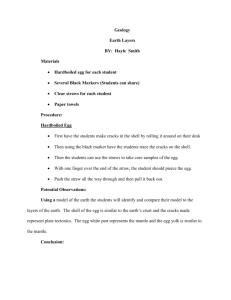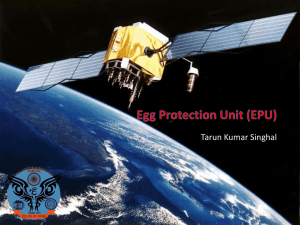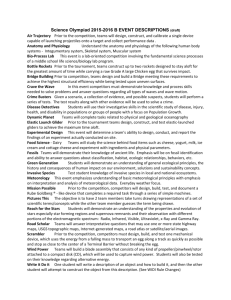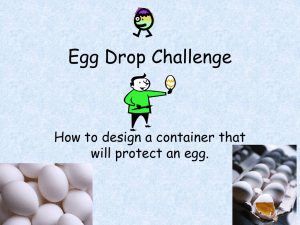Handout A with answers
advertisement
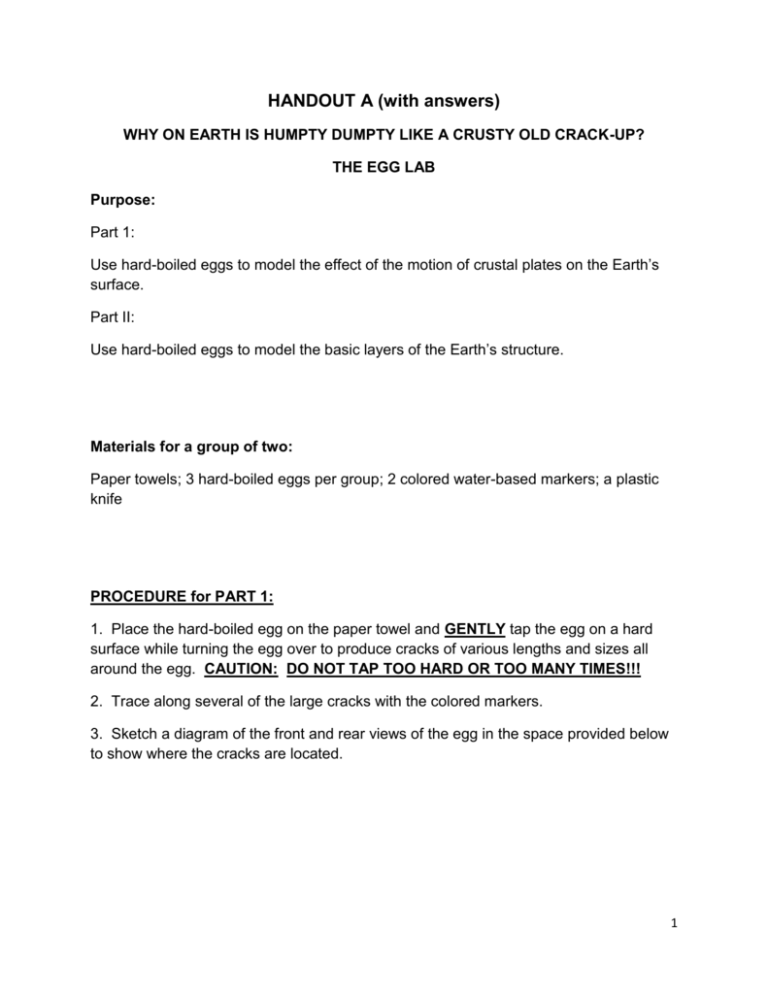
HANDOUT A (with answers) WHY ON EARTH IS HUMPTY DUMPTY LIKE A CRUSTY OLD CRACK-UP? THE EGG LAB Purpose: Part 1: Use hard-boiled eggs to model the effect of the motion of crustal plates on the Earth’s surface. Part II: Use hard-boiled eggs to model the basic layers of the Earth’s structure. Materials for a group of two: Paper towels; 3 hard-boiled eggs per group; 2 colored water-based markers; a plastic knife PROCEDURE for PART 1: 1. Place the hard-boiled egg on the paper towel and GENTLY tap the egg on a hard surface while turning the egg over to produce cracks of various lengths and sizes all around the egg. CAUTION: DO NOT TAP TOO HARD OR TOO MANY TIMES!!! 2. Trace along several of the large cracks with the colored markers. 3. Sketch a diagram of the front and rear views of the egg in the space provided below to show where the cracks are located. 1 Front View of Egg Rear View of Egg 4. VERY gently squeeze the egg to produce the following types of motion: a. two adjacent pieces of the shell pulling apart; b. two adjacent pieces of the shell pressing together; c. two pieces of shell sliding alongside each other in opposite directions. Use arrows on your sketch to indicate the direction of the movement of the eggshell pieces as described in a, b and c. ANSWER the FOLLOWING QUESTIONS 1. What do the egg and the pieces of the shell represent? The egg represents the earth; the shell represents the crust. 2. What do the cracks represent? They represent the various tectonic plates of the earth. 3. What happened when you gently pulled the two edges of shell away from each other? What type of boundary does this represent? Where are they usually found? What do they cause? They produced the trenches which show the white part of the egg which also represents the mantle. Divergent. In the ocean. Ridges and rifts such as the Mid Atlantic Ridge and the Great Rift Valley 2 4. What happened when you gently pressed two edges of the shell together? What type of boundary does this represent? Would you expect subduction to occur at this boundary with two pieces of eggshell? Why or why not? What results when two continental crusts collide? Give an example of one that began millions of years ago and is still going on today. They buckled upward. This represents a convergent (continental collision); no; because they are the same density as one would not sink below the other; mountains are formed; Himalayans. 5. What happened when you slid one shell edge alongside an adjacent edge in the opposite direction? What type of boundary is this called? What can occur here? What is an example of this type of boundary? When pressed hard enough, pressure and tension build up and eventually release a burst of energy and motion causing some of the shell to break apart. Transform boundary or transform fault margin. Earthquake. San Andreas Fault in California. 6. Why is using a hard-boiled egg to model the motion of the Earth’s crustal plates limited? Give two shortcomings. The egg shell has the same density throughout. The Earth’s tectonic plates do not: oceanic plates are denser than continental plates. Egg shells do not move but tectonic plates do. PROCDURE for PART 2: 1. Take the plastic knife and cut cross ways through one of the eggs. Examine the layers closely. ANSWER the FOLLOWING QUESTIONS 1. What part of the basic structure of the Earth would be represented by the egg shell? Crust 2. What part would the egg white represent? Mantle 3 3. What part would be represented by the yolk of the egg? Core 4. List one strength and one weakness for using the egg as a g model for the basic structure of the Earth. Both the Earth and the egg have three observable layers The Earth’s core is subdivided into an inner a solid core and a liquid outer core; whereas, the egg has only a solid core. 4
